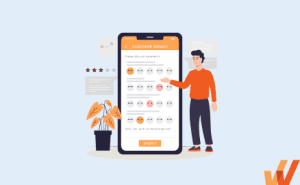If you’re required to interact with customers as part of your job, then your role involves customer service. Contrary to popular belief, customer service isn’t a concept restricted to customer success and support. Instead, it’s a key business strategy and a driver of your entire company’s culture.
We all know that customers no longer buy products. They buy experiences. Therefore, each interaction with your company, whether it’s with your customer service, sales, or marketing team, contributes to the customer’s overall experience.
This is also why positive customer communication strategies should be adopted as a business-wide strategy to improve customer communications and create delightful experiences. For instance, having a standardized customer communication strategy can help create pleasant user experiences that can be replicated. In such a system, it doesn’t matter whether a customer is interacting with a service or marketing rep – they will experience positive interactions at every touchpoint on their customer journey.
In this post, we will briefly touch upon the importance of customer communication management, followed by nine tips to improve your customer communication strategy.
What Is Customer Communication Management?
Customer communications management is a set of practices to create better interactions between your organization and customers. With customer communication management, you can engage your users better through consistent brand management and support across all channels to effectively address their pain points. Customer communication management strengthens customer relationships by improving your overall communication strategy to improve customer acquisition and customer retention.
The Importance of Your Customer Communication Strategy
In the past few years, the ways that companies communicate with their customers have changed. Traditional modes like mail, fax, and call centers have given way to new digital methods like email, SMS, social media, live chat, and chatbots.
Thanks to these changes, the world is no longer connected from 9 to 5. Instead, we are online 24/7 and expect the same from businesses we transact with.
A 2018 Pew Research Center survey found that 77% of Americans go online daily. 43% of the respondents went online several times each day, while 26% were constantly online. Those with mobile connectivity spent even more time on the internet, with 89% of mobile users visiting the world wide web daily. 31% of mobile users claimed to be constantly online. Besides spending an increasing amount of time on the internet, the way people shop and interact with brands has also changed.
According to Google, 59% of users research online before buying a product or service. Another research by Google reveals that only 11% of consumers can be treated as strictly “online customers,” and almost the same percentage can be earmarked as strictly “offline consumers.” It also adds that an average user makes use of more than three touchpoints in their sales journey. Another survey found that more than half of American businesses use a minimum of 10 different channels to interact with customers.
The emergence of digital touchpoints and changing behavior patterns have changed the flow of communication. User expectations have also changed. Most consumers expect seamless experiences across different touchpoints and 24/7 end-user support. They don’t see your brand in silos but expect a unified experience, irrespective of when and where they interact with your brand.
But there’s no need to feel overwhelmed with advanced customer support technology at your fingertips. It’s easier than ever to integrate various touchpoints into a common platform and create a strong communication strategy for your brand. The following section will introduce you to customer service automation and other tips to improve your communication strategy and accelerate customer adoption.
Related Resources
Tips to Improve Your Customer Communication Strategy
Here are nine tips to improve your organization’s customer communication strategy.
1. Have Dedicated Customer Service & Success Managers
Customer success is not about driving sales. Instead, it focuses on helping customers achieve the promised outcomes from your product or service. The increasing importance of customer success has led to the new post of customer service managers (CSM), dedicated to raising customer experience in their organizations.
The role of a CSM is often confused with a sales manager. But that’s incorrect. Ideally, a CSM should guide customers through the sales process into the support phase. Instead of working as a customer support agent, a CSM’s role is to form deep relationships with customers to provide them with timely value propositions. This helps customers achieve their goals while also developing more loyalty towards your business.
2. Create Customer Profiles for Segmenting Customers
Customer segmentation is vital for personalization. It works by breaking up your customer base into smaller segments according to demographic data or other such parameters. With segmentation, it becomes possible to eliminate the guesswork involved in marketing. With precise data for each group, it becomes easier to create personalized content that resonates with the audience and gets them clicking.
Victoria’s Secret is one example of a company putting market segmentation to good use. Victoria’s Secret mainly targets women, while their brand PINK is targeted towards teenage girls. However, the brand also markets itself to men – husbands or boyfriends looking to purchase gifts for their partners. Besides dividing its customer base by gender and age, the brand also targets a relatively affluent audience with extra income to spend on relatively expensive lingerie.
3. Take an Omnichannel Communication Approach
Data indicates that businesses with an omnichannel customer service strategy retain an average of 89% of customers compared to 33% for businesses with weak omnichannel strategies. Having an omnichannel communication strategy helps you meet your customers where they are while bridging the gap between online and offline seamlessly.
One example worth citing here is Sephora that connects its users’ online purchases to their in-store visits. Customers can use tablets provided within the store to access their Beauty Bag account while shopping. They can look up item details and try the items virtually before adding them to their wish list to complete the purchase.
An omnichannel communication strategy also eliminates the silos between various customer touch points. That’s why it’s crucial to identify the communication channels preferred by your customers before thinking of the best ways to deliver a consistent experience across the identified channels. For instance, it might be a good idea to use a chatbot on your site, social media pages, and mobile app. You can also integrate your customer support platform with your CRM to build an automatically updating repository of customer information.
4. Invest in Live Chat Tools
Customer service is the heart of any user-centric business. Most consumers expect speedy and reliable customer support with at least some kind of personalization in it. And, if you fail to deliver it, you can expect customers to abandon ship for businesses that offer a better support experience.
Integrating live chat software such as Acquire on your digital touchpoints can help you deliver reliable customer service and build user trust. Live chat enables instant conversations with options like co-browsing and video chat to enable real-time collaboration for faster troubleshooting and query resolution.
According to Emarketer, 63% of consumers are more likely to return to a website that offers live chat. The following image shows why live chat is the preferred channel for customer support.
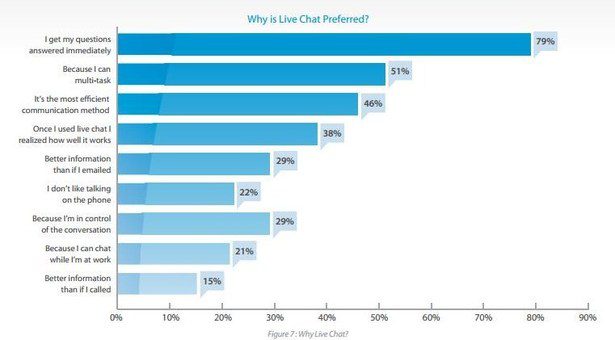
5. Implement Self-Service Support Channels
According to an American Express survey, more customers prefer self-service and digital options for more straightforward inquiries, specifically for online chat and mobile apps. However, you need to understand your customers and their pain points to create comprehensive self-help resources that are genuinely useful.
For instance, you can pick out commonly asked questions from your live chat transcripts to create an FAQs section where your customers can find the information they need to troubleshoot independently.
Some of the most effective customer self-help resources include:
- FAQs
- Knowledge base
- Video tutorials
- How-to guides
A good example is the Canva design school which contains hundreds of videos and how-to guides to help users get the maximum benefit out of their software. Canva also has an in-depth knowledge base that answers many frequently-asked customer questions.
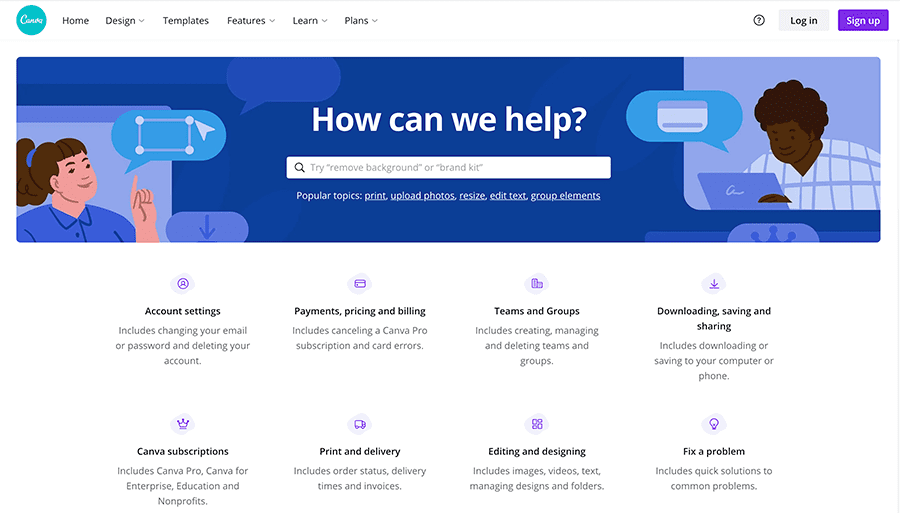
With a digital adoption platform like Whatfix, organizations can directly embed a self-help knowledge base widget directly on top of their application or website. This allows users to search for answers to support queries at the moment of need.
6. Measure & Monitor Customer Communication Metrics
You can’t improve what you cannot measure. That’s why it’s important to identify and track key customer service communication metrics like first response time (FRT) (to improve the response time for every interaction), average response time, and customer satisfaction (CSAT) metrics to gauge the satisfaction level of your customers. These metrics should be a part of your overall customer success metrics you’re tracking.
7. Regularly Ask for Customer Feedback
Customer feedbackc is a gift, and you must ask for it regularly to improve your service and customer satisfaction levels. Product feedback from customers helps you in several ways:
- Helps you know what customers feel about your brand
- Identify the gaps in your communication strategy
- Opens up a conversation to develop long-term relationships
- Identify the shortcomings in your product or service and improve it
- Make customers feel heard and valued
Besides collecting feedback, it’s also essential you act on it and inform the customer about the steps you took (or did not and why), so they feel involved in your business.
8. Build Knowledge Bases for Self-Learning
A knowledge base is one of the best self-learning tools to guide users and drive customer success. Take the example of Dropbox that makes it exceptionally simple to onboard and start using its services.
Dropbox pulls out the most common issues on the main page and adds some illustrations to create a friendly and reassuring environment for beginners. After the featured articles pointing customers to the most common use cases and issues, Dropbox also includes a help center that highlights ways to get more value from its services.
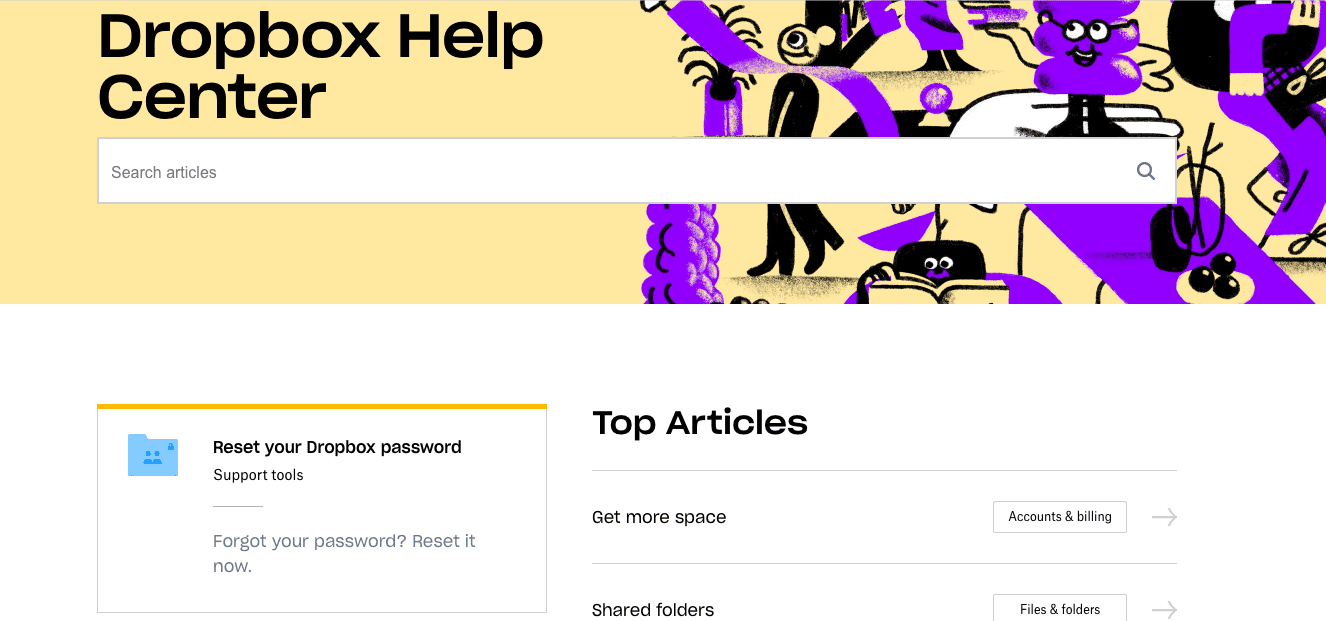
An effective knowledge base enables customers with a self-service experience to find answers without needing additional help, deflecting support tickets and improving customer satisfaction.
Be sure to explore the best knowledge base software tools to find a solution that is right for your organization’s objectives.
9. Be Proactive, Not Reactive
A proactive customer service approach is aimed at eliminating problems before they appear. On the other hand, a reactive approach is based on responding to events after they have occurred. Traditionally, customer service has been reactive in nature.
However, more businesses are now adopting a proactive approach to customer service, which focuses on resolving issues even before they arise. One example worth citing here is Facebook that gives customers several ways to solve their own problems. Instead of raising support tickets or making calls, Facebook users can browse through the FAQs and the dynamic help section to find information on various topics with site overviews for new customers.
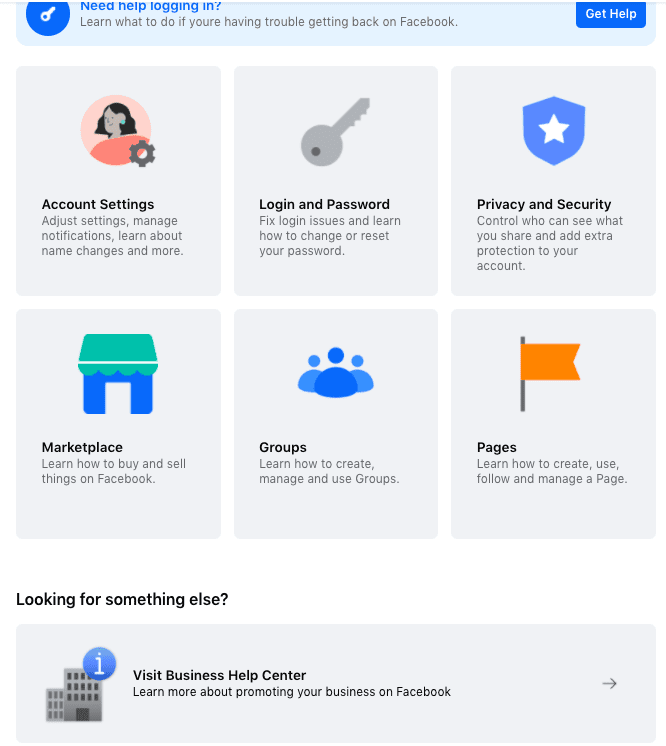
Customer Communication Clicks Better With Whatfix
A unified customer communication strategy can help increase user engagement and boost loyalty toward your brand. While it’s great to introduce customer service tools and identify areas of improvement, it’s also essential to create an atmosphere of customer success to make sure each of your employees works towards the same goal.
With a DAP like Whatfix, enable your customers with in-app guidance and self-help user support. With Whatfix, make customer announcements right inside your application, customer portal, or website. Whatfix’s DAP is a no-code editor, meaning non-technical team members can create and launch in-app flows, tours, pop-ups, tooltips, and more – all without engineering dependencies.


